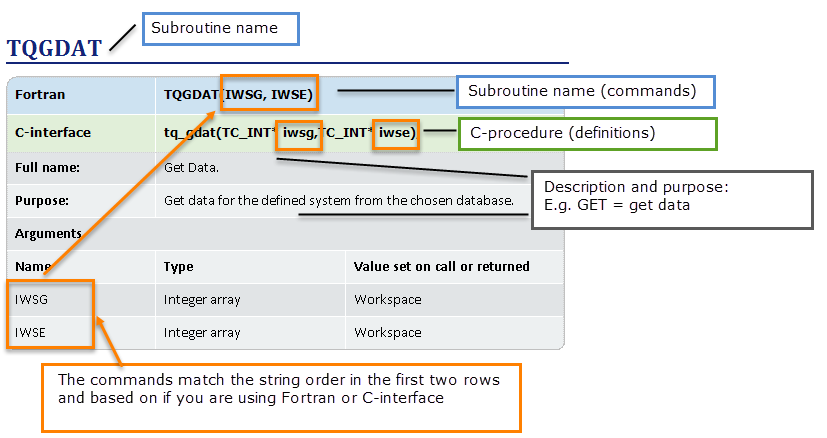TQGMDX
| Fortran |
TQGMDX(IP, NE, NCNV, NC, IWORK, WORK, YF, VARR, GM, DGDX, XF, IWSG, IWSE) |
|
|---|---|---|
| C-interface |
tq_gmdx(TC_INT indexp,TC_INT ne,TC_INT ncnv,TC_INT nc,TC_INT* iwork, TC_FLOAT* work,TC_FLOAT* yf,TC_FLOAT* varr,TC_FLOAT* gm,TC_FLOAT* dgdx,TC_FLOAT* xf,TC_INT* iwsg,TC_INT* iwse); |
|
|
Full name: |
Get Gibbs energy and its partial derivative w.r.t. X-fraction. |
|
|
Purpose: |
Converting Gibbs energy and its 1st partial derivatives with respect to site fractions (VARR obtained by calling TQGMDY) to that w.r.t mole fractions for a phase. |
|
|
Comments: |
Uses the phase constitution properties obtained by TQGPHP as input. Note VARR obtained by calling TQGMDY is in unit of J/mole of formula unit. GM and DGDX in the present subroutine is in unit of J/mole of atoms. For the use of this subroutine together with TQGPHP and TQX2Y, see Example 10. |
|
|
Arguments |
||
|
Name |
Type |
Value set on call or returned |
|
IP |
Integer |
Set to a phase index. |
|
NE |
Integer |
Set to number of components |
|
NCNV |
Integer |
Set to number of constituents without counting vacancies |
|
NC |
Integer |
Set to number of constituents |
|
IWORK |
Integer array |
Set to values needed in X to Y conversion |
|
WORK |
Double precision array |
Set to values needed in X to Y conversion |
|
YF |
Double precision array |
Set to site fractions |
|
VARR |
Double precision array |
Set to Gibbs energy and its first derivative with respect to site fractions |
|
GM |
Double precision |
Return Gibbs energy |
|
DGDX |
Double precision array |
Return Gibbs energy and its first derivative with respect to mole fractions |
|
XF |
Double precision array |
Return mole fractions |
|
IWSG |
Integer array |
Workspace |
|
IWSE |
Integer array |
Workspace |
Note the following conventions to distinguish between the programming languages.
- Routines starting with TQXXX, for example, TQGDAT, are in the Fortran interface
- Routines starting with tq_xxxx, for example tq_gdat, are in the C-interface.
- In Fortran, all routines are subroutines and do not return any values except where explicitly declared as functions.
- All the C procedures are declared as void and do not return any values except where explicitly otherwise declared.
An example of how to read the subroutine definitions.
